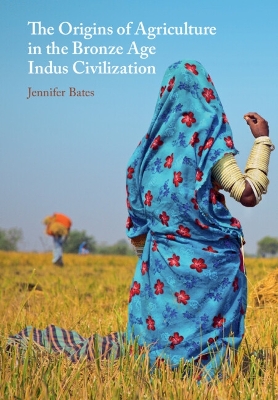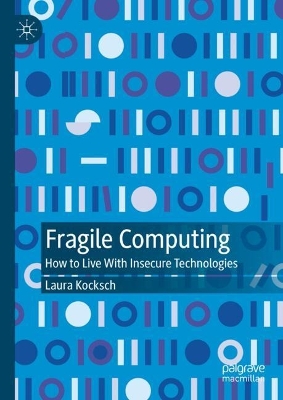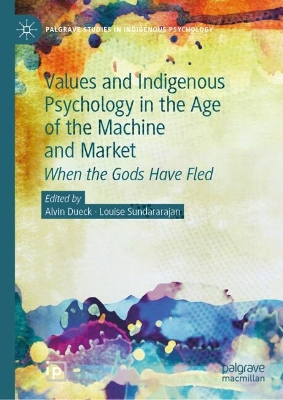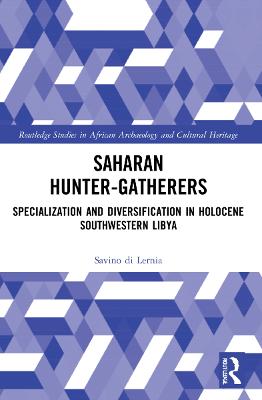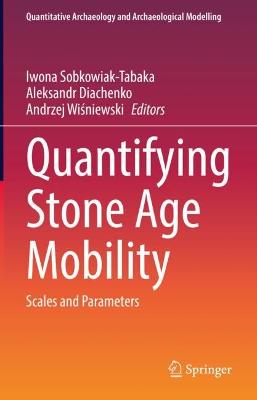Routledge Handbook of Mesoamerican Bioarchaeology
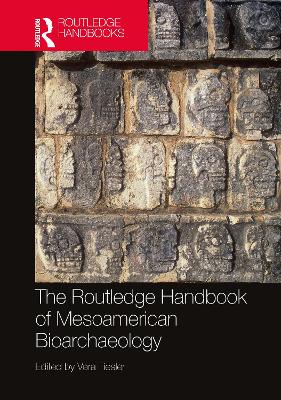 portes grátis
portes grátis
Routledge Handbook of Mesoamerican Bioarchaeology
Tiesler, Vera
Taylor & Francis Ltd
05/2022
738
Dura
Inglês
9780367357818
15 a 20 dias
1583
Descrição não disponível.
INTRODUCTION
Vera Tiesler
Part I: FRAMING MESOAMERICAN BIOARCHAEOLOGY
1.1. The Early Days of Mesoamerican Osteology
Andrew K. Scherer
1.2. Management and Conservation of Human Remains From Mesoamerica: Ethical, Legal, and Technical Recommendations
Maria del Carmen Lerma Gomez and Juan Manuel Argueelles San Milan
1.3. The Preceramic Skeletal Record of Mexico and Central America
James C. Chatters, Joaquin Arroyo-Cabrales, and Pilar Luna-Erreguerena
1.4. North of Mesoamerica: Bioarchaeology of the Northwest, North-Central, and Northeast
Patricia Olga Hernandez Espinoza and James T. Watson
1.5. Bioarchaeological Studies in the Southern Periphery of Mesoamerica
Shintaro Suzuki
Part II: ACROSS THE HUMAN LANDSCAPES OF PRE-COLUMBIAN MESOAMERICA
2.1. The Bioarchaeology of Preclassic Mesoamerica and the Advent of Statehood
Monica Rodriguez Perez
2.2. Bioarchaeology of Oaxaca: Major Developments in the Study of 3500 years of Mortuary Practice in Southern Mexico
Ricardo Higelin Ponce de Leon and Guy David Hepp
2.3. Maya Bioarchaeology
Andrew K. Scherer and Joshua T. Schnell
2.4. The People of the Southern Central Region of Veracruz
Carlos Serrano Sanchez and Mireya Montiel Mendoza
2.5. The Bioarchaeology of the Central Highlands of Mesoamerica From the Early Classic Period Through the Toltec Period
Emily J. Kate and Meggan Bullock
2.6. The Heartland of the Empire: Studying the Aztecs
Ximena Chavez Balderas, Diana K. Moreiras Reynaga, and Diana Bustos Rios
Part III: THE BIOARCHAEOLOGY OF CITIES, NEIGHBORHOODS, AND COMMUNITIES
3.1. The Inhabitants of Monte Alban: A Bioarchaeological Approach
Lourdes Marquez Morfin and Aurora Marcela Perez-Florez
3.2. The Multiethnic Population of a Teotihuacan Neighborhood Center: Bioarchaeological, Archaeometric, and Ancient DNA Analyses
Linda R. Manzanilla-Naim
3.3. The Community of Xcambo, a Classic-Period Maya Port in the Yucatan Peninsula
Thelma Sierra Sosa, Allan Ortega-Munoz, and Andrea Cucina
3.4. Bioarchaeology in Copan, Honduras: Spearheading Maya Bioarchaeology
Shintaro Suzuki and T. Douglas Price
Part IV: THE BODY AS A CULTURAL CONSTRUCT
4.1. The Bioarchaeology of Permanent Body Modifications in Mesoamerica
Vera Tiesler
4.2. Royal Bodies: The Life Histories of Janaab' Pakal and The "Red Queen" of Palenque, Chiapas, Mexico
Erik Velasquez Garcia and Vera Tiesler
4.3. Archaeothanatology: A Body-Anchored Approach to Mesoamerican Mortuary Analyses
Gregory Pereira and Hemmamuthe Goudiaby
4.4. The Bioarchaeology of Ritualized Violence and Posthumous Treatments of the Human Body in Mesoamerica
Judith Ruiz Gonzalez and Vera Tiesler
Part V: LIFE STYLE, DIET, AND HEALTH
5.1. Mesoamerican Paleopathology: A Bioarchaeological Approach to Diseases From the Past
Raul Lopez Perez
5.2. Living Conditions, Gender, and Stature
Marie Elaine Danforth, Jaime Thomas, and Peter Mercier
5.3. Geographic Variation in Mesoamerican Paleodiets: A Review of Recent Stable Carbon and Nitrogen Isotopic Analyses
Victoria S. R. Izzo, Lori E. Wright, and Alex Canterbury
Part VI: POPULATION AND MOBILITY
6.1. Population Continuity and Mobility Across Mesoamerica
Cathy Willermet, Corey S. Ragsdale, and Heather J.H. Edgar
6.2. Baseline Strontium Isotope Ratios in Mesoamerica
T. Douglas Price and Carolyn Freiwald
6.3. The Paleo-DNA of Ancient Mesoamerican Peoples
Victor Acuna Alonzo and Miguel Angel Contreras Sieck
6.4. Population Structure, Fertility, and Growth
Allan Ortega Munoz and Patricia Olga Hernandez-Espinoza
6.5. The Craniometry of Mesoamerican Population Distances
Jorge A. Gomez-Valdes
Part VII: BREAKING NEW GROUNDS IN METHODOLOGY
7.1. 3D Digitization and Analysis of Human Skeletal Remains for Mesoamerican Bioarchaeology
Gabriel Wrobel
7.2. Methods in Bioarchaeology: What's New in Profiling an Individual Inside and Out
Carolyn Freiwald, Jonathan Belanich, and Asta Rand
7.3. Histomorphology of Un-Decalcified Bone in Mesoamerican Bioarchaeology
Corey Maggiano and Isabel Maggiano
7.4. The Phenomenon of Mummification in Ancient Mexico
Josefina Mansilla Lory and Ilan S. Leboreiro Reyna
Part VIII: THE BIOARCHAEOLOGY OF THE THRESHOLDS OF MODERNITY: LEARNING FROM THE PAST TO MEET TODAY'S CHALLENGES
8.1. The Bioarchaeology of Colonial New Spain
Julie K. Wesp
8.2. The Serdan Brothers: Reconstructing the Mortuary Trajectory of the Three Heroes of the Mexican Revolution
Luisa Mainou Cervantes and Jorge A. Gomez Valdes
8.3. General Trends in Size in Maya Populations of the Yucatan Peninsula From the Preclassic to the 2010s: A Diachronic Perspective From Human EcologyHugo Azcorra, Saul Chay Vela, Oana del Castillo Chavez, and Federico Dickinson Bannack
8.4. Making Research of Human Reference Collections Available to Bioarchaeology and Forensic Anthropology
Julio Roberto Chi Keb, Antinea Menendez Garmendia, Gabriela Sanchez-Mejorada, and Jorge Gomez-Valdes
Vera Tiesler
Part I: FRAMING MESOAMERICAN BIOARCHAEOLOGY
1.1. The Early Days of Mesoamerican Osteology
Andrew K. Scherer
1.2. Management and Conservation of Human Remains From Mesoamerica: Ethical, Legal, and Technical Recommendations
Maria del Carmen Lerma Gomez and Juan Manuel Argueelles San Milan
1.3. The Preceramic Skeletal Record of Mexico and Central America
James C. Chatters, Joaquin Arroyo-Cabrales, and Pilar Luna-Erreguerena
1.4. North of Mesoamerica: Bioarchaeology of the Northwest, North-Central, and Northeast
Patricia Olga Hernandez Espinoza and James T. Watson
1.5. Bioarchaeological Studies in the Southern Periphery of Mesoamerica
Shintaro Suzuki
Part II: ACROSS THE HUMAN LANDSCAPES OF PRE-COLUMBIAN MESOAMERICA
2.1. The Bioarchaeology of Preclassic Mesoamerica and the Advent of Statehood
Monica Rodriguez Perez
2.2. Bioarchaeology of Oaxaca: Major Developments in the Study of 3500 years of Mortuary Practice in Southern Mexico
Ricardo Higelin Ponce de Leon and Guy David Hepp
2.3. Maya Bioarchaeology
Andrew K. Scherer and Joshua T. Schnell
2.4. The People of the Southern Central Region of Veracruz
Carlos Serrano Sanchez and Mireya Montiel Mendoza
2.5. The Bioarchaeology of the Central Highlands of Mesoamerica From the Early Classic Period Through the Toltec Period
Emily J. Kate and Meggan Bullock
2.6. The Heartland of the Empire: Studying the Aztecs
Ximena Chavez Balderas, Diana K. Moreiras Reynaga, and Diana Bustos Rios
Part III: THE BIOARCHAEOLOGY OF CITIES, NEIGHBORHOODS, AND COMMUNITIES
3.1. The Inhabitants of Monte Alban: A Bioarchaeological Approach
Lourdes Marquez Morfin and Aurora Marcela Perez-Florez
3.2. The Multiethnic Population of a Teotihuacan Neighborhood Center: Bioarchaeological, Archaeometric, and Ancient DNA Analyses
Linda R. Manzanilla-Naim
3.3. The Community of Xcambo, a Classic-Period Maya Port in the Yucatan Peninsula
Thelma Sierra Sosa, Allan Ortega-Munoz, and Andrea Cucina
3.4. Bioarchaeology in Copan, Honduras: Spearheading Maya Bioarchaeology
Shintaro Suzuki and T. Douglas Price
Part IV: THE BODY AS A CULTURAL CONSTRUCT
4.1. The Bioarchaeology of Permanent Body Modifications in Mesoamerica
Vera Tiesler
4.2. Royal Bodies: The Life Histories of Janaab' Pakal and The "Red Queen" of Palenque, Chiapas, Mexico
Erik Velasquez Garcia and Vera Tiesler
4.3. Archaeothanatology: A Body-Anchored Approach to Mesoamerican Mortuary Analyses
Gregory Pereira and Hemmamuthe Goudiaby
4.4. The Bioarchaeology of Ritualized Violence and Posthumous Treatments of the Human Body in Mesoamerica
Judith Ruiz Gonzalez and Vera Tiesler
Part V: LIFE STYLE, DIET, AND HEALTH
5.1. Mesoamerican Paleopathology: A Bioarchaeological Approach to Diseases From the Past
Raul Lopez Perez
5.2. Living Conditions, Gender, and Stature
Marie Elaine Danforth, Jaime Thomas, and Peter Mercier
5.3. Geographic Variation in Mesoamerican Paleodiets: A Review of Recent Stable Carbon and Nitrogen Isotopic Analyses
Victoria S. R. Izzo, Lori E. Wright, and Alex Canterbury
Part VI: POPULATION AND MOBILITY
6.1. Population Continuity and Mobility Across Mesoamerica
Cathy Willermet, Corey S. Ragsdale, and Heather J.H. Edgar
6.2. Baseline Strontium Isotope Ratios in Mesoamerica
T. Douglas Price and Carolyn Freiwald
6.3. The Paleo-DNA of Ancient Mesoamerican Peoples
Victor Acuna Alonzo and Miguel Angel Contreras Sieck
6.4. Population Structure, Fertility, and Growth
Allan Ortega Munoz and Patricia Olga Hernandez-Espinoza
6.5. The Craniometry of Mesoamerican Population Distances
Jorge A. Gomez-Valdes
Part VII: BREAKING NEW GROUNDS IN METHODOLOGY
7.1. 3D Digitization and Analysis of Human Skeletal Remains for Mesoamerican Bioarchaeology
Gabriel Wrobel
7.2. Methods in Bioarchaeology: What's New in Profiling an Individual Inside and Out
Carolyn Freiwald, Jonathan Belanich, and Asta Rand
7.3. Histomorphology of Un-Decalcified Bone in Mesoamerican Bioarchaeology
Corey Maggiano and Isabel Maggiano
7.4. The Phenomenon of Mummification in Ancient Mexico
Josefina Mansilla Lory and Ilan S. Leboreiro Reyna
Part VIII: THE BIOARCHAEOLOGY OF THE THRESHOLDS OF MODERNITY: LEARNING FROM THE PAST TO MEET TODAY'S CHALLENGES
8.1. The Bioarchaeology of Colonial New Spain
Julie K. Wesp
8.2. The Serdan Brothers: Reconstructing the Mortuary Trajectory of the Three Heroes of the Mexican Revolution
Luisa Mainou Cervantes and Jorge A. Gomez Valdes
8.3. General Trends in Size in Maya Populations of the Yucatan Peninsula From the Preclassic to the 2010s: A Diachronic Perspective From Human EcologyHugo Azcorra, Saul Chay Vela, Oana del Castillo Chavez, and Federico Dickinson Bannack
8.4. Making Research of Human Reference Collections Available to Bioarchaeology and Forensic Anthropology
Julio Roberto Chi Keb, Antinea Menendez Garmendia, Gabriela Sanchez-Mejorada, and Jorge Gomez-Valdes
Este título pertence ao(s) assunto(s) indicados(s). Para ver outros títulos clique no assunto desejado.
Ancient DNA Analysis;Linear Enamel Hypoplasia;Young Men;Monte Negro;Ancient DNA;El Zapotal;Porotic Hyperostosis;Dental Decoration;Altar De Sacrificios;Enamel Hypoplasia;Middle Preclassic;Piedras Negras;Postclassic Periods;Cranial Modifications;Bioarchaeological Research;Cribra Orbitalia;Mesoamerican Populations;Preclassic Period;Late Preclassic;Skeletal Collection;Dental Inlay;Middle Preclassic Period;Casa Grandes;Biological Distances;Feathered Serpent
INTRODUCTION
Vera Tiesler
Part I: FRAMING MESOAMERICAN BIOARCHAEOLOGY
1.1. The Early Days of Mesoamerican Osteology
Andrew K. Scherer
1.2. Management and Conservation of Human Remains From Mesoamerica: Ethical, Legal, and Technical Recommendations
Maria del Carmen Lerma Gomez and Juan Manuel Argueelles San Milan
1.3. The Preceramic Skeletal Record of Mexico and Central America
James C. Chatters, Joaquin Arroyo-Cabrales, and Pilar Luna-Erreguerena
1.4. North of Mesoamerica: Bioarchaeology of the Northwest, North-Central, and Northeast
Patricia Olga Hernandez Espinoza and James T. Watson
1.5. Bioarchaeological Studies in the Southern Periphery of Mesoamerica
Shintaro Suzuki
Part II: ACROSS THE HUMAN LANDSCAPES OF PRE-COLUMBIAN MESOAMERICA
2.1. The Bioarchaeology of Preclassic Mesoamerica and the Advent of Statehood
Monica Rodriguez Perez
2.2. Bioarchaeology of Oaxaca: Major Developments in the Study of 3500 years of Mortuary Practice in Southern Mexico
Ricardo Higelin Ponce de Leon and Guy David Hepp
2.3. Maya Bioarchaeology
Andrew K. Scherer and Joshua T. Schnell
2.4. The People of the Southern Central Region of Veracruz
Carlos Serrano Sanchez and Mireya Montiel Mendoza
2.5. The Bioarchaeology of the Central Highlands of Mesoamerica From the Early Classic Period Through the Toltec Period
Emily J. Kate and Meggan Bullock
2.6. The Heartland of the Empire: Studying the Aztecs
Ximena Chavez Balderas, Diana K. Moreiras Reynaga, and Diana Bustos Rios
Part III: THE BIOARCHAEOLOGY OF CITIES, NEIGHBORHOODS, AND COMMUNITIES
3.1. The Inhabitants of Monte Alban: A Bioarchaeological Approach
Lourdes Marquez Morfin and Aurora Marcela Perez-Florez
3.2. The Multiethnic Population of a Teotihuacan Neighborhood Center: Bioarchaeological, Archaeometric, and Ancient DNA Analyses
Linda R. Manzanilla-Naim
3.3. The Community of Xcambo, a Classic-Period Maya Port in the Yucatan Peninsula
Thelma Sierra Sosa, Allan Ortega-Munoz, and Andrea Cucina
3.4. Bioarchaeology in Copan, Honduras: Spearheading Maya Bioarchaeology
Shintaro Suzuki and T. Douglas Price
Part IV: THE BODY AS A CULTURAL CONSTRUCT
4.1. The Bioarchaeology of Permanent Body Modifications in Mesoamerica
Vera Tiesler
4.2. Royal Bodies: The Life Histories of Janaab' Pakal and The "Red Queen" of Palenque, Chiapas, Mexico
Erik Velasquez Garcia and Vera Tiesler
4.3. Archaeothanatology: A Body-Anchored Approach to Mesoamerican Mortuary Analyses
Gregory Pereira and Hemmamuthe Goudiaby
4.4. The Bioarchaeology of Ritualized Violence and Posthumous Treatments of the Human Body in Mesoamerica
Judith Ruiz Gonzalez and Vera Tiesler
Part V: LIFE STYLE, DIET, AND HEALTH
5.1. Mesoamerican Paleopathology: A Bioarchaeological Approach to Diseases From the Past
Raul Lopez Perez
5.2. Living Conditions, Gender, and Stature
Marie Elaine Danforth, Jaime Thomas, and Peter Mercier
5.3. Geographic Variation in Mesoamerican Paleodiets: A Review of Recent Stable Carbon and Nitrogen Isotopic Analyses
Victoria S. R. Izzo, Lori E. Wright, and Alex Canterbury
Part VI: POPULATION AND MOBILITY
6.1. Population Continuity and Mobility Across Mesoamerica
Cathy Willermet, Corey S. Ragsdale, and Heather J.H. Edgar
6.2. Baseline Strontium Isotope Ratios in Mesoamerica
T. Douglas Price and Carolyn Freiwald
6.3. The Paleo-DNA of Ancient Mesoamerican Peoples
Victor Acuna Alonzo and Miguel Angel Contreras Sieck
6.4. Population Structure, Fertility, and Growth
Allan Ortega Munoz and Patricia Olga Hernandez-Espinoza
6.5. The Craniometry of Mesoamerican Population Distances
Jorge A. Gomez-Valdes
Part VII: BREAKING NEW GROUNDS IN METHODOLOGY
7.1. 3D Digitization and Analysis of Human Skeletal Remains for Mesoamerican Bioarchaeology
Gabriel Wrobel
7.2. Methods in Bioarchaeology: What's New in Profiling an Individual Inside and Out
Carolyn Freiwald, Jonathan Belanich, and Asta Rand
7.3. Histomorphology of Un-Decalcified Bone in Mesoamerican Bioarchaeology
Corey Maggiano and Isabel Maggiano
7.4. The Phenomenon of Mummification in Ancient Mexico
Josefina Mansilla Lory and Ilan S. Leboreiro Reyna
Part VIII: THE BIOARCHAEOLOGY OF THE THRESHOLDS OF MODERNITY: LEARNING FROM THE PAST TO MEET TODAY'S CHALLENGES
8.1. The Bioarchaeology of Colonial New Spain
Julie K. Wesp
8.2. The Serdan Brothers: Reconstructing the Mortuary Trajectory of the Three Heroes of the Mexican Revolution
Luisa Mainou Cervantes and Jorge A. Gomez Valdes
8.3. General Trends in Size in Maya Populations of the Yucatan Peninsula From the Preclassic to the 2010s: A Diachronic Perspective From Human EcologyHugo Azcorra, Saul Chay Vela, Oana del Castillo Chavez, and Federico Dickinson Bannack
8.4. Making Research of Human Reference Collections Available to Bioarchaeology and Forensic Anthropology
Julio Roberto Chi Keb, Antinea Menendez Garmendia, Gabriela Sanchez-Mejorada, and Jorge Gomez-Valdes
Vera Tiesler
Part I: FRAMING MESOAMERICAN BIOARCHAEOLOGY
1.1. The Early Days of Mesoamerican Osteology
Andrew K. Scherer
1.2. Management and Conservation of Human Remains From Mesoamerica: Ethical, Legal, and Technical Recommendations
Maria del Carmen Lerma Gomez and Juan Manuel Argueelles San Milan
1.3. The Preceramic Skeletal Record of Mexico and Central America
James C. Chatters, Joaquin Arroyo-Cabrales, and Pilar Luna-Erreguerena
1.4. North of Mesoamerica: Bioarchaeology of the Northwest, North-Central, and Northeast
Patricia Olga Hernandez Espinoza and James T. Watson
1.5. Bioarchaeological Studies in the Southern Periphery of Mesoamerica
Shintaro Suzuki
Part II: ACROSS THE HUMAN LANDSCAPES OF PRE-COLUMBIAN MESOAMERICA
2.1. The Bioarchaeology of Preclassic Mesoamerica and the Advent of Statehood
Monica Rodriguez Perez
2.2. Bioarchaeology of Oaxaca: Major Developments in the Study of 3500 years of Mortuary Practice in Southern Mexico
Ricardo Higelin Ponce de Leon and Guy David Hepp
2.3. Maya Bioarchaeology
Andrew K. Scherer and Joshua T. Schnell
2.4. The People of the Southern Central Region of Veracruz
Carlos Serrano Sanchez and Mireya Montiel Mendoza
2.5. The Bioarchaeology of the Central Highlands of Mesoamerica From the Early Classic Period Through the Toltec Period
Emily J. Kate and Meggan Bullock
2.6. The Heartland of the Empire: Studying the Aztecs
Ximena Chavez Balderas, Diana K. Moreiras Reynaga, and Diana Bustos Rios
Part III: THE BIOARCHAEOLOGY OF CITIES, NEIGHBORHOODS, AND COMMUNITIES
3.1. The Inhabitants of Monte Alban: A Bioarchaeological Approach
Lourdes Marquez Morfin and Aurora Marcela Perez-Florez
3.2. The Multiethnic Population of a Teotihuacan Neighborhood Center: Bioarchaeological, Archaeometric, and Ancient DNA Analyses
Linda R. Manzanilla-Naim
3.3. The Community of Xcambo, a Classic-Period Maya Port in the Yucatan Peninsula
Thelma Sierra Sosa, Allan Ortega-Munoz, and Andrea Cucina
3.4. Bioarchaeology in Copan, Honduras: Spearheading Maya Bioarchaeology
Shintaro Suzuki and T. Douglas Price
Part IV: THE BODY AS A CULTURAL CONSTRUCT
4.1. The Bioarchaeology of Permanent Body Modifications in Mesoamerica
Vera Tiesler
4.2. Royal Bodies: The Life Histories of Janaab' Pakal and The "Red Queen" of Palenque, Chiapas, Mexico
Erik Velasquez Garcia and Vera Tiesler
4.3. Archaeothanatology: A Body-Anchored Approach to Mesoamerican Mortuary Analyses
Gregory Pereira and Hemmamuthe Goudiaby
4.4. The Bioarchaeology of Ritualized Violence and Posthumous Treatments of the Human Body in Mesoamerica
Judith Ruiz Gonzalez and Vera Tiesler
Part V: LIFE STYLE, DIET, AND HEALTH
5.1. Mesoamerican Paleopathology: A Bioarchaeological Approach to Diseases From the Past
Raul Lopez Perez
5.2. Living Conditions, Gender, and Stature
Marie Elaine Danforth, Jaime Thomas, and Peter Mercier
5.3. Geographic Variation in Mesoamerican Paleodiets: A Review of Recent Stable Carbon and Nitrogen Isotopic Analyses
Victoria S. R. Izzo, Lori E. Wright, and Alex Canterbury
Part VI: POPULATION AND MOBILITY
6.1. Population Continuity and Mobility Across Mesoamerica
Cathy Willermet, Corey S. Ragsdale, and Heather J.H. Edgar
6.2. Baseline Strontium Isotope Ratios in Mesoamerica
T. Douglas Price and Carolyn Freiwald
6.3. The Paleo-DNA of Ancient Mesoamerican Peoples
Victor Acuna Alonzo and Miguel Angel Contreras Sieck
6.4. Population Structure, Fertility, and Growth
Allan Ortega Munoz and Patricia Olga Hernandez-Espinoza
6.5. The Craniometry of Mesoamerican Population Distances
Jorge A. Gomez-Valdes
Part VII: BREAKING NEW GROUNDS IN METHODOLOGY
7.1. 3D Digitization and Analysis of Human Skeletal Remains for Mesoamerican Bioarchaeology
Gabriel Wrobel
7.2. Methods in Bioarchaeology: What's New in Profiling an Individual Inside and Out
Carolyn Freiwald, Jonathan Belanich, and Asta Rand
7.3. Histomorphology of Un-Decalcified Bone in Mesoamerican Bioarchaeology
Corey Maggiano and Isabel Maggiano
7.4. The Phenomenon of Mummification in Ancient Mexico
Josefina Mansilla Lory and Ilan S. Leboreiro Reyna
Part VIII: THE BIOARCHAEOLOGY OF THE THRESHOLDS OF MODERNITY: LEARNING FROM THE PAST TO MEET TODAY'S CHALLENGES
8.1. The Bioarchaeology of Colonial New Spain
Julie K. Wesp
8.2. The Serdan Brothers: Reconstructing the Mortuary Trajectory of the Three Heroes of the Mexican Revolution
Luisa Mainou Cervantes and Jorge A. Gomez Valdes
8.3. General Trends in Size in Maya Populations of the Yucatan Peninsula From the Preclassic to the 2010s: A Diachronic Perspective From Human EcologyHugo Azcorra, Saul Chay Vela, Oana del Castillo Chavez, and Federico Dickinson Bannack
8.4. Making Research of Human Reference Collections Available to Bioarchaeology and Forensic Anthropology
Julio Roberto Chi Keb, Antinea Menendez Garmendia, Gabriela Sanchez-Mejorada, and Jorge Gomez-Valdes
Este título pertence ao(s) assunto(s) indicados(s). Para ver outros títulos clique no assunto desejado.
Ancient DNA Analysis;Linear Enamel Hypoplasia;Young Men;Monte Negro;Ancient DNA;El Zapotal;Porotic Hyperostosis;Dental Decoration;Altar De Sacrificios;Enamel Hypoplasia;Middle Preclassic;Piedras Negras;Postclassic Periods;Cranial Modifications;Bioarchaeological Research;Cribra Orbitalia;Mesoamerican Populations;Preclassic Period;Late Preclassic;Skeletal Collection;Dental Inlay;Middle Preclassic Period;Casa Grandes;Biological Distances;Feathered Serpent

